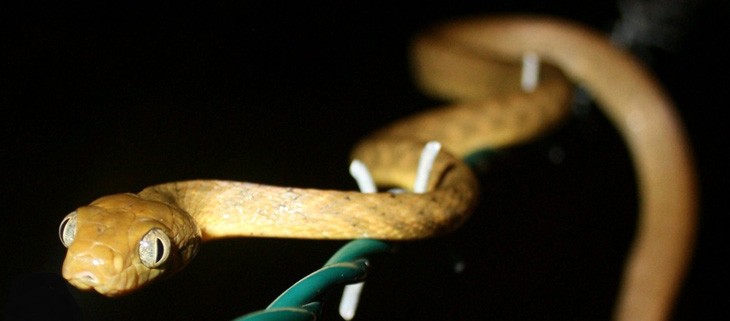December 4, 2024
The Ebiil Society: Champions of Palau
Ann Singeo, founder of our partner organization the Ebiil Society, shares her vision for a thriving Palau and a flourishing world of indigenous science!
We use cookies to help you navigate efficiently and perform certain functions. You will find detailed information about all cookies under each consent category below.
The cookies that are categorized as "Necessary" are stored on your browser as they are essential for enabling the basic functionalities of the site. ...
Necessary cookies are required to enable the basic features of this site, such as providing secure log-in or adjusting your consent preferences. These cookies do not store any personally identifiable data.
Functional cookies help perform certain functionalities like sharing the content of the website on social media platforms, collecting feedback, and other third-party features.
Analytical cookies are used to understand how visitors interact with the website. These cookies help provide information on metrics such as the number of visitors, bounce rate, traffic source, etc.
Performance cookies are used to understand and analyze the key performance indexes of the website which helps in delivering a better user experience for the visitors.
Advertisement cookies are used to provide visitors with customized advertisements based on the pages you visited previously and to analyze the effectiveness of the ad campaigns.
Looking to make an impact this Earth Month? Here’s how.

Since their introduction to Guam around 1949, brown tree snake populations have flourished in the region, preying upon native avifauna. By the 1990s, ten species of Micronesian birds were driven locally extinct on Guam by brown tree snake predation. Currently, the Micronesian Starling is the only remaining tree-dwelling species on the islands and is limited to the Andersen Air Force Base and a small island off Guam’s southwestern tip.
The Micronesian Starling, native to Micronesia, the Northern Mariana Islands, and Palau, has smooth, jet-black plumage and piercing yellow eyes. Micronesian Starlings provide many vital ecosystem services, including seed dispersal and insect control. Haldre Rogers, a biologist at Iowa State University, studies the impact of bird losses in Guam and found that new tree growth in Guam has declined by up to 92 percent due to declining numbers of seed-dispersing birds. Protecting the Starling is vital to preserving the remnants of Guam’s native forests and invasive brown tree snakes are a primary threat.

In search of a method to control the snakes, researchers have observed a new behavioral adaptation, which could be used to create snake-proof structures and protect wildlife. Infrared cameras set up to monitor a Micronesian Starling nest provided wildlife biologists Thomas Seibert and Martin Kastner with time-lapse footage of a snake using “lasso locomotion” as a climbing strategy to maneuver up to the nest.
We looked at each other in total shock because this was not anything that we expected or had ever seen,” says Seibert.
This unexpected climbing strategy is a unique and rare form of snake movement that provides new insights into how brown tree snakes hunt and climb. Typically, snakes exercise concertina locomotion to grip trees or poles, by using two anchor points. Their upper body pulls themselves upward as their lower body grips for stability. When using lasso locomotion, snakes wrap their bodies around a structure and use a slight bend that moves from head to tail to climb slowly.
By studying this new movement pattern, researchers hope to identify snake-proofing methods to prevent them from accessing nests or anything they want to keep snakes out of.
Sometimes I think we focus on other characteristics of invasives, such as their diet or habitat,” says Savidge. “And we need to remember that the locomotor abilities are also very important in the success of the species.”
Savidge and Seibert are testing methods, including the use of larger utility poles that the snakes cannot wrap around or new nest box structures on poles protected by a cone shape. They believe that if a snake attempts to lasso-climb the cone, it will loosen its grip as it climbs, making it fall instead. Such a device could be distributed across Guam to deter brown tree snakes, restoring Micronesian Starling populations and native forest.
Featured Photo: A Brown Tree Snake (Boiga irregularis). Credit: U.S. Department of Agriculture
Source: Smithsonian Magazine
Check out other journal entries we think you might be interested in.
Notifications